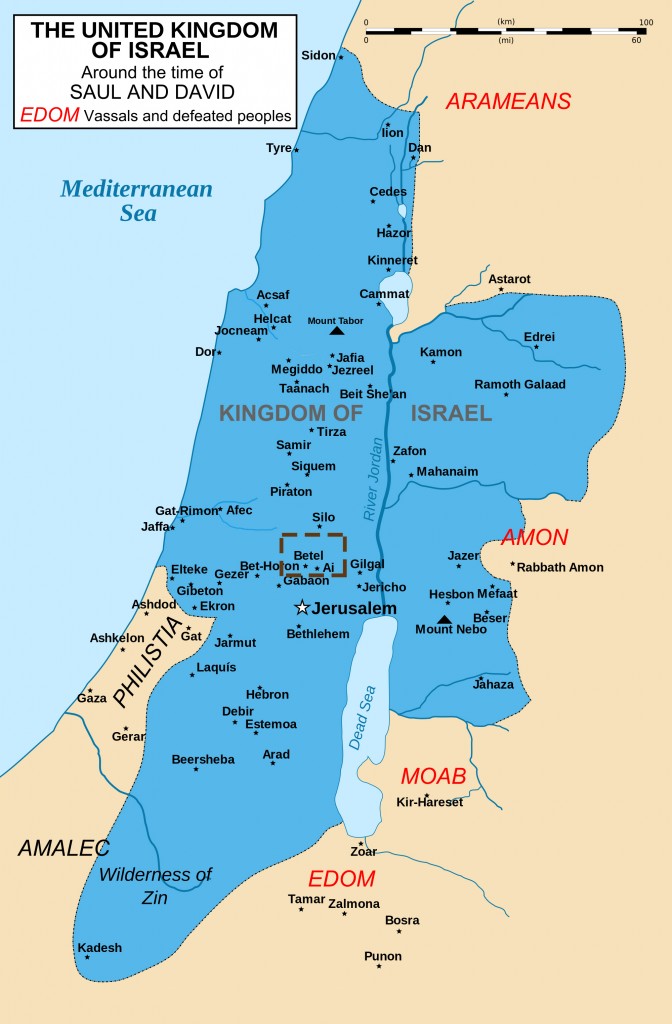
Bereishit יב (Genesis 12)
8 And he removed from there unto the mountain on the east of Beth-el, and pitched his tent, having Beth-el on the west, and Ai on the east; and he built there an altar unto the LORD, and called upon the name of the LORD. 9 And Abram journeyed, going on still toward the South.
Beth-El is an ancient city which lies 10 miles north of Jerusalem in the Samaria region. The city is associated with the Canaanite city of Luz (Bereishit 35:6). The city of Luz and the area of Abraham’s Beth-El are not one and the same. Beth-El was the place, the sanctuary, which was defined by Abraham whereas Luz was a nearby city that was eventually enveloped by Beth-El.1 Beth-El is often associated with Abraham who made a sanctuary in the area and gave it the name of Beth-El. Beth-El has been identified by some with the modern-day Israeli city of Beit-El.
Beth-El has been identified with the Arab village of Beitin. Edward Robinson is believed to have been the first person to identify ancient Beth-El with the ruins of the village Beitin in the nineteenth century.2
But no scholar made the obvious identification of Beitil with Khirbet Beitin, an hour’s walk northeast of el-Bireh, until it fell into the lap of the great American Biblical topographer, Edward Robinson, along with many other sound identifications, in May, 1838. He examined the extensive ruins of the ancient city, then entirely unoccupied, and noted that the phonetic relation of Beitin to Beitil is normal in Arabic. Since the publication of Robinson’s results in 1841 no competent topographer has hesitated for a moment to accept the identification as essentially correct . . . .(Albright 1968:1, our emphasis).2
Beth-El has also been identified as el-Bireh – the Arab city adjacent to Ramallah. Jeroboam established an altar an established the worship of a golden calf in Beth-El (I Kings 12:32). Excavations at Beitin found no archaeological evidence of an altar or high place. However, the site of el-Bireh does show evidence of a high place called Ras et-Tahumneh.
Bereishit יב (Genesis 12)
8 And he removed from there unto the mountain on the east of Beth-el, and pitched his tent, having Beth-el on the west, and Ai on the east; and he built there an altar unto the LORD, and called upon the name of the LORD. 9 And Abram journeyed, going on still toward the South.
Ai was originally a Canaanite royal city and is associated with the modern-day et-Tell. Eusebius and Jerome both spoke about the location of the Biblical Ai.
Eusebius: “’Aggai (Genesis 12:8). The sun goes down (over) Bethel, not far away. Bethel is situated going up to Jerusalem from Neapolis (Nablus) on the left at the 12th marker, and it still remains. ‘Aggai is deserted and can only be pointed out. This is the record of Gai.”3
Jerome: “Aggai goes west toward the region of Bethel, not much from it in distance. Now Bethel is situated on the left side of the road nearly 12 milestones from Aelia going toward Aelia from Neapoli(s). And to this day only a small village can be shown. But a church is built where Jacob slept on his way to Mesopotamia. The place itself he named “Bethel,” it is “the house of God.” Actually, there are scarcely any remains of Aggai, and the place is barely discernable. It must be known that Hebrew does not have the letter G, but it is called Ai, and written through the alphabet which among us is called Ain.”3
The site associated with the Biblical Ai is often based upon the location associated with the Biblical Beth-el. W. F. Albright made the suggestion that Ai was mistaken for Beth-el by the writers of the Bible. Other scholars believe that Beth-el is near Shechem which would place Ai closer to Shechem as well. Joseph Callaway has been led to believe that et-Tell was Ai based upon his own excavations but Grintz suggested that et-Tell is in actuality Beth-Aven.4
———————————–
1”Luz.” bible-history.com. Bible History Online. n.d. Web 19 November 2011. [http://www.bible-history.com/isbe/L/LUZ/]
2David Livingston. “Locating Biblical Bethel Correctly – Part I.” davelivingston.com. Ancient Days. 2003. Web 19 November 2011. [http://www.davelivingston.com/bethel14.htm]
3David Livingston. “Locating Biblical Ai Correctly.” davelivingston.com. Ancient Days. 2003. Web 17 December 2011. [http://www.davelivingston.com/ai15.htm]
4David Livingston. “Location of Biblical Bethel and Ai Reconsidered.” biblearchaeology.org. Associates for Biblical Research. November 1970. Web 18 December 2011. [https://www.biblearchaeology.org/post/2009/06/25/Location-of-Biblical-Bethel-and-Ai-Reconsidered.aspx#Article]
